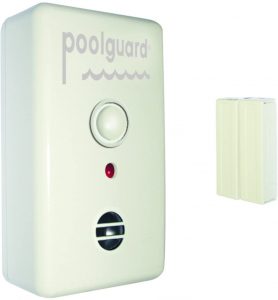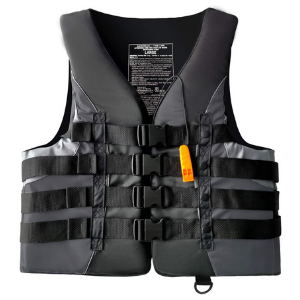Reviewed by health expert Sally Russell, MN, CMSRN, CNE
Drowning Prevention Guide
SafeWise experts have years of firsthand experience testing the products we recommend. Learn how we test and review.
Drowning prevention isn’t just handy if you own a pool. It can take place in just inches of water.¹ Even if you don’t think you or your family are likely to be in a situation where a drowning may occur, you might be at some point. It’s the fourth leading cause of death around the home.
Our guide can help you prevent a drowning situation for children and adults at home, the lake, or the pool.
By signing up, you agree to our Terms and Conditions and Privacy Policy.
Drowning prevention for kids
There are some quick and fast rules for preventing childhood drowning:
Teach water safety
Teaching children about water safety and pool safety early is essential. Health expert and mother of two, Sally Russell, MN, CMSRN, CNE, says that if you live near a lake, pond, or a pool, you should develop a routine of always putting a swim jacket on your child before going to that area.
Here are some additional ways to keep children safe around pools and lakes.
Get swim education early
Swimming lessons at a very early age reduce the risk of drowning in children and teens.² Even babies can learn how to swim in specialized classes.
The American Red Cross free swim-lessons tool can help you find classes in your area for babies, kids, teens, and adults.
You may also consider lifeguard training for teens. This added layer of education can teach your teen how to react and help in a water emergency, which is useful whether they want a job at the local pool this summer or not.
Always supervise children around water
No matter what, adult supervision is key when it comes to kids and water. It can take just seconds for a child to get into a drowning situation.
Check out our guide to learn how to react in a potential drowning situation.
Fence off pools
Fencing is an excellent way to prevent kids from accessing your home’s pool. For the fence to work, make sure it’s always locked when the pool is not in use. Beware, though. Some children will figure out how to scale a locked fence, so it’s not foolproof protection.
There are various safety products you can add to your pool too. These pool accessories will alert you when a child is alone near the water.
Be aware of less obvious dangers around the home
Even if you don’t own a pool, there are still drowning dangers around your home:
- Kiddie pools
- Ponds
- Water features
- Toilets
- Large buckets
- Hot tubs and jacuzzis
- Ditches around your yard after it rains
- Open wells (these should be fitted with a childproof cover)
Also, there are some unexpected ways kids can access drowning hazards. Be sure to keep pet doors locked to prevent escapes to the outdoors. And ensure that screen doors and window screens don’t have holes that small children can climb through too.
Keep bath time safe
75% of infant drownings happen in a bathtub.² Never step away, even for a second, when bathing babies and young children. Remember, even if you only put a little water in the tub, a human can drown in just an inch of water. Also, don’t trust a baby bath seat to keep your tot upright in the water. These chairs can tip over, even when suctioned to the floor of the tub.
You shouldn’t just worry about tub drownings during bath time. A tricky tot can wander into the bathroom and attempt to start their own baths. Even babies as young as 10 to 18 months can climb into a bathtub.⁶ Childproof bathroom door handles and make sure the doors are always closed.
Learn more about bathroom safety for kids.
Stop sneaky kids with sensors
*Amazon.com price as of post date. Read full disclaimer.
Kids are sneaky, so adding multiple alarms around the house is a great idea to prevent drowning. Put motion sensor alarms on doors that lead to the backyard, pool area, or bathroom so you know when your kiddo is on the move to a potentially dangerous area.
You don't need a full home security system to put up door alarms and motion sensors. Check out our recommendations:
Wear a life jacket
*Amazon.com price as of post date. Read full disclaimer.
Life jackets save lives, but your chances of survival are better if you make sure that your life jacket fits and won’t slip off or get in the way in an emergency. To make sure your life jacket fits, check the label to see if it will support your size and weight before purchasing it.
Also, for basic padded life jackets, you’ll need to put on the life jacket, fasten it, then hold your arms over your head. Get a friend to grab the armholes and pull up. If the jacket covers your chin or there is space between your shoulders and the top of the jacket, you’ll need to either tighten the straps or get a smaller life jacket.
If a bulky vest isn’t for you, consider choosing an auto-inflatable vest. They are compact and will automatically inflate if you fall into the water. This guide by the US Coast Guard can help you choose the right life jacket or flotation device for your needs.
Avoid alcohol
Opt for a non-alcoholic beverage when you’re swimming, hanging out on the boat, or lounging around the pool. Alcohol usage is a factor in up to 70% of adolescent and adult water-recreation deaths.²
There are several reasons why alcohol and water don’t mix. It impairs your balance and coordination so you’re more likely to fall in and not be able to get back out. It also impairs judgment, so you’re more likely to do something risky.
Check your prescriptions
Some prescriptions increase the likelihood of drowning. Check with your doctor to see if your prescription may inhibit your motor skills or your ability to think clearly.
Drowning prevention for pets
It’s a myth that all cats and dogs can swim. They need supervision and protection, just like a young child. Here’s how to keep your pet safe:
- Don’t leave pets alone around water where they can be submerged.
- Get your pet a flotation device for trips to the lake, beach, or swimming pool.
- Sign your dog up for swimming lessons or teach them how to swim.
- Install a pet-safe ramp or swimming pool ladder so your pet can climb out if they fall in the water.
Drowning prevention FAQ
According to the CDC, there are 22 nonfatal drownings and 11 drowning deaths per day.²
Very! An estimated 236,000 people die each year worldwide from drowning.³ Even if they don’t die, drowning patients can suffer mental and physical impairments from lack of oxygen.
Children between the ages of one and four are most at-risk. Around 80% of people that die from drowning are male.²
The person is typically silent, with their mouths near the surface of the water. Their heads are tilted back as they try to gasp for air, and they may try to swim, but not get anywhere.⁴
There are some other clues:
- Hyperventilating or gasping
- Glassy eyes
- Arms out to the side
- Hair over eyes
- Making a climbing motion with arms and hands
- Bobbing up and down
Secondary drowning, also called dry drowning, is when water is inhaled and causes breathing problems hours later.⁵ Coughing or trouble breathing for a prolonged time are signs that medical attention is needed.
Yes, cardiopulmonary resuscitation (CPR) is a lifesaving rescue technique that can save someone’s life in a drowning situation. The American Red Cross offers CPR classes across the country.
Related articles on SafeWise
Sources
- The YMCA, “Drowning Facts.” Accessed June 29, 2022.
- CDC, “Drowning Facts," March 2022. Accessed June 29, 2022.
- WHO, “Drowning,” April 2021. Accessed June 29, 2022.
- University of Utah Health, “What Does Drowning Look Like?” August 2015. Accessed June 29, 2022.
- Cleveland Clinic, “‘Dry Drowning’: Separating Fact From Fiction,” September 2020. Accessed June 29, 2022.
- Sarah A Denny, MD, FAAP, et al., Journal of The American Academy Of Pediatrics, “Prevention of Drowning,” August 2021. Accessed June 29, 2022.
Disclaimer
*Product prices and availability are accurate as of the date/time indicated and are subject to change. Any price and availability information displayed on Amazon at the time of purchase will apply to the purchase of this product. Safewise.com utilizes paid Amazon links.
Certain content that appears on this site comes from Amazon. This content is provided “as is” and is subject to change or removal at any time.
Recent Articles





